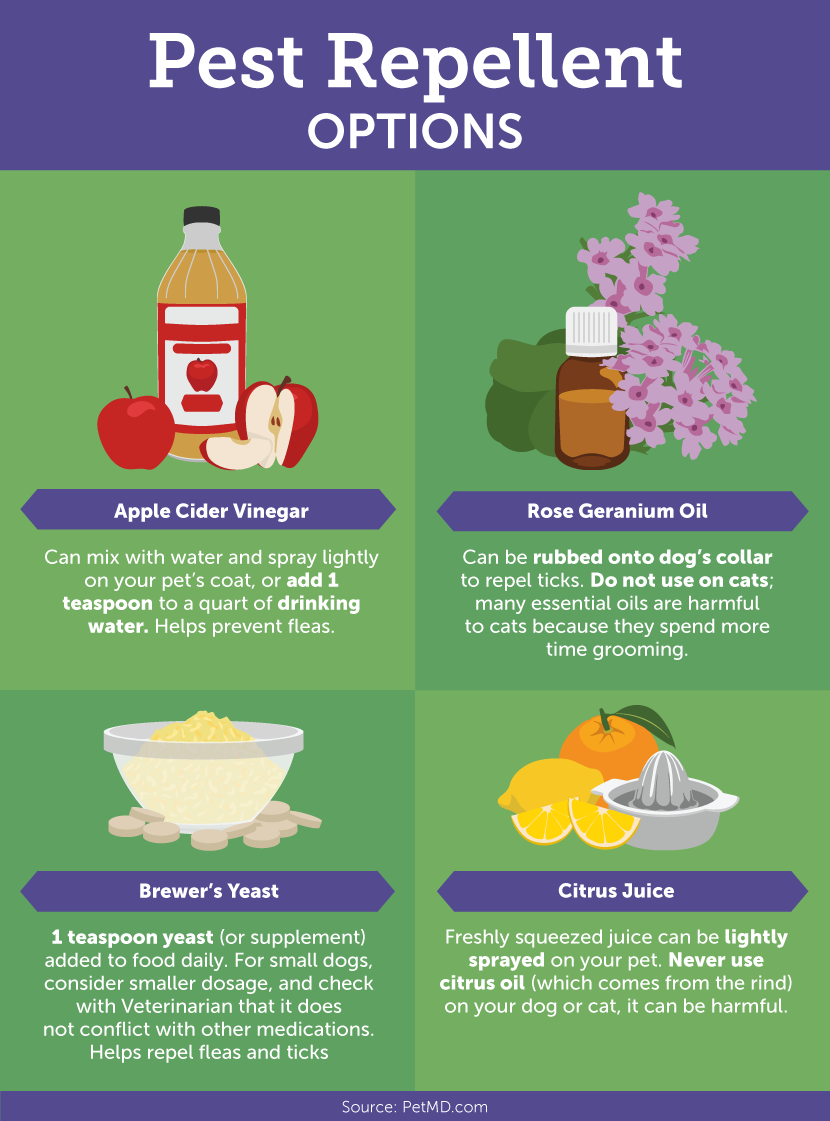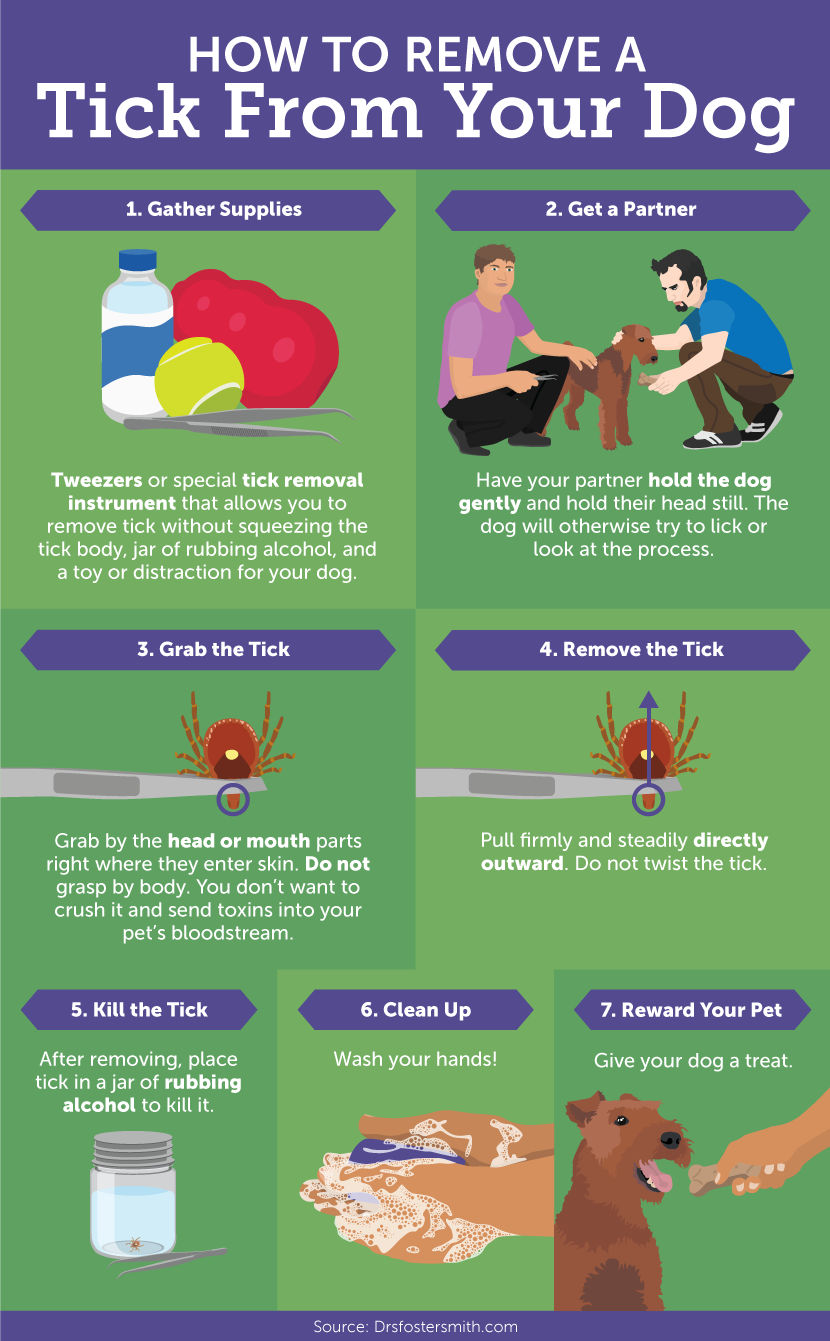Protecting Your Pet From Ticks and Fleas
Ticks and fleas are year-round pests, but pet-owners tend to encounter them most during the warmer months. While most owners (and their dogs!) are familiar with fleas, they should also keep ticks on their radar.
Members of the spider family, ticks can carry bacteria and viruses that transmit disease. They have four life stages – egg, larva, nymph, and adult –
and at each stage after hatching, ticks can feast on the blood of host animals, including deer, rodents, and your dog.
Prevention is Key
The best way to deal with ticks and fleas on your dog is to prevent them in the first place. Start by taking preventative measures to keep ticks out of your yard and any other outdoor spaces your dog frequents.
The easiest, most important preventions don’t require anything but elbow grease. For example, you should mow high grass and clean up leaf piles or wood piles since ticks like to dwell in these spaces.
For further yard protection, introduce one of the following to your backyard:
- Nematodes: These microscopic, worm-like organisms live in soil and feed on tick larvae, breaking their life cycles and killing the parasite.
- Diatomaceous earth: This powder consists of ground fossils, marine life, and freshwater organisms. Non-toxic to humans and animals, this powder is lethal to ticks and fleas.
- Sprays containing fenvalerate: These environmentally safe sprays can be applied in pet yards and on grass.
You can prevent ticks and fleas from finding homes on your pets by grooming dogs and cats often with a flea comb, which has closely spaced teeth.
Dogs of appropriate breeds can have their coats trimmed in the summer, keeping them cooler and eliminating flea and tick hangouts.
Dog owners also have a wide variety of natural remedies and traditional medications to choose from to repel fleas and ticks. Traditional medications include insecticides applied to the back of the dog’s neck or shoulder region, such as Frontline,
flea collars, and dips and shampoos that contain permethrin or pyrethrin.
Dog owners who live in areas with high tick infestations or whose dogs spend the majority of their time outdoors may want to give their pet the Lyme vaccine.
Don’t want to subject your dog to harsh chemicals? Go the natural route! Citrus juices naturally repel ticks. Just make sure you use actual squeezed juice and not citrus essential oils since these contain toxins in the rind.
A combination of garlic and brewer’s yeast added to your dog’s food bowl can also ward against ticks, as can rose geranium oil applied to the dog’s collar, not its skin.
Attention Cat Owners
Never use products containing permethrin on cats because it can be deadly to them! Topical oils and dips can also be toxic since cats spend more time grooming themselves than dogs do, which means they can ingest too much of the remedy.

Tick Awareness
After thoroughly protecting your dog, it’s also important to know where you’re most likely to encounter ticks when enjoying nature with Fido.
- Tall grass: Overgrown grass can be found in meadows, fields, and your own yard. Keep your grass mowed, and avoid walks with your dog in high grass when possible.
- Deer: If you live in an area with a deer population, you can discourage deer from entering your yard by creating physical barriers or removing plants that attract them.
- Wet environments: Ticks like to congregate around still water, such as water features in yards and small ponds.
- Where ticks are NOT located: Contrary to popular belief, ticks don’t jump, hop, or fly, so they can’t drop on your dog from trees.http://www.tickencounter.org

Treatment
Sometimes, no matter how diligent pet owners are, dogs will get ticks. Check your dog after spending time outdoors together just like you check yourself. It can help to use a small flashlight to see clearly past fur.
Look in warm, dark places, such as your dog’s armpits and groin/belly area. If you find a tick on your dog, follow these dos and don’ts!
- Do get a partner. On all but the calmest dogs, it takes one person to gently hold the dog still and the other to remove the tick.
- Do work slowly – don’t jerk.
- Don’t try to suffocate the tick with petroleum jelly or burn it with a hot match. These irritants may cause the tick to deposit more disease-carrying saliva in the wound.
- Do kill the tick after it’s out by putting it in alcohol (flushing it won’t kill it).

Getting ticks off of your dog isn’t a fun process, but by doing so, you can prevent disease and keep your dog healthy, happy, and ready for another romp in the outdoors.
Embed the article on your site

